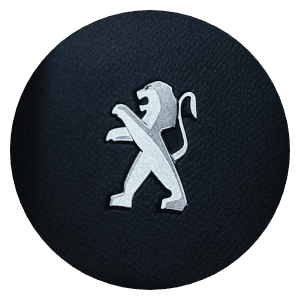Secure order and payment
30. 01. 2024
European Automotive Trade: 7 Hurdles Faced by Car Importers in the EU
The European Union (EU) automotive market is a vast landscape of opportunities, attracting car importers seeking to tap into its diverse consumer base. However, this lucrative terrain comes with its fair share of challenges. For importers, understanding and overcoming these hurdles are crucial for success. Here, we delve into the six difficulties car importers commonly encounter in the EU and explore potential solutions.
Certificate of Conformity (COC) plays a crucial role in addressing several challenges faced by car importers in the European Union. It serves as documentation proving that a vehicle meets the necessary regulatory standards set by the EU. Here’s how COC can help mitigate some of the difficulties encountered by importers:
1. Regulatory Compliance and Standards
The EU has stringent regulations governing vehicle safety, emissions, and technical standards. Meeting these requirements can be a labyrinthine process for importers. Ensuring that vehicles comply with EU standards often demands extensive modifications or adjustments, adding to costs and time-to-market.
Solution: Collaborating with local regulatory experts or agencies can streamline compliance processes. Establishing strong partnerships with EU-based manufacturers or distributors can also provide insights into meeting these standards early in the manufacturing or procurement phase. COC simplifies the compliance process by providing a standardized document recognized across EU member states. This allows importers to demonstrate conformity without undergoing exhaustive individual inspections, saving time and resources.
2. Tariffs and Taxes
Import duties, value-added tax (VAT), and other tariffs significantly impact the cost competitiveness of imported vehicles. Understanding the complex tariff structures across different EU countries can be challenging, leading to unexpected financial burdens.
Solution: Engaging customs and trade professionals can help navigate the intricacies of tariffs and taxes. Leveraging free trade agreements, where applicable, and strategic warehousing in low-tariff jurisdictions within the EU can minimize costs.
3. Market Access and Distribution Channels
Establishing effective distribution channels and gaining market access amidst existing competition poses a hurdle for importers. Breaking into established networks and dealership structures within the EU can be daunting.
Solution: Building partnerships with local dealerships, leveraging online platforms, and exploring innovative distribution models like direct-to-consumer approaches can create new avenues for market entry. Adapting marketing strategies to suit local preferences and cultures also enhances penetration. With a COC in hand, importers can smoothly navigate the bureaucratic complexities associated with gaining approval for vehicle importation in various EU markets. This streamlines the market entry process and accelerates the time-to-market for imported vehicles.
4. Cultural and Consumer Preferences
The EU comprises diverse cultures with unique preferences and buying behaviors. Understanding and adapting to these variations is essential for success. Importers often struggle to align their offerings with these diverse consumer tastes.
Solution: Conducting comprehensive market research to grasp local consumer preferences is critical. Tailoring products, features, and marketing messages to resonate with specific regional preferences can help gain traction in different markets. Displaying the COC to consumers reinforces the legitimacy and compliance of the imported vehicles, fostering trust and credibility among potential buyers. This can positively impact sales and brand reputation.
5. Logistics and Supply Chain Challenges
Navigating complex logistics networks and optimizing supply chains to ensure timely deliveries while managing costs can be a logistical nightmare for importers.
Solution: Investing in robust logistics infrastructure and establishing partnerships with reliable logistics providers can streamline the supply chain. Embracing technological solutions like inventory management software and real-time tracking systems optimizes efficiency.
6. Currency Fluctuations and Economic Instability
Volatility in currency exchange rates and economic uncertainties within the EU and globally can significantly impact the financial health of car importers.
Solution: Implementing risk management strategies such as currency hedging or diversifying supplier bases across multiple regions can mitigate the impact of currency fluctuations. Maintaining agile financial planning and closely monitoring market trends helps in adapting to economic changes swiftly.
7. Cost Efficiency
Seeking individual approvals or conducting exhaustive compliance tests for each imported vehicle can be financially burdensome. COC streamlines the certification process, reducing the need for extensive, costly testing.
Solution: By leveraging COC, importers can significantly cut down on compliance-related expenses. The standardized documentation minimizes the need for redundant testing or modifications, contributing to cost efficiency.
In essence, the Certificate of Conformity serves as a pivotal tool for car importers in overcoming regulatory, market access, consumer confidence, and cost-related challenges within the EU. Its role in simplifying compliance procedures, facilitating market entry, bolstering consumer trust, and optimizing costs underscores its significance as a strategic asset for importers navigating the complexities of the European automotive landscape.
In conclusion, while the EU automotive market presents immense opportunities, overcoming these challenges demands proactive measures and strategic approaches. Car importers need to forge strong partnerships, employ agile strategies, and demonstrate adaptability to navigate these hurdles successfully. By understanding and addressing these difficulties head-on, importers can carve a niche and thrive in the competitive European automotive landscape.
Don’t let COC certification complexities slow you down. With EUROCOC, you’re choosing a path of efficiency and compliance in the European automotive market. Embrace a seamless experience and keep your focus on success. EUROCOC – simplifying compliance, enhancing efficiency.











